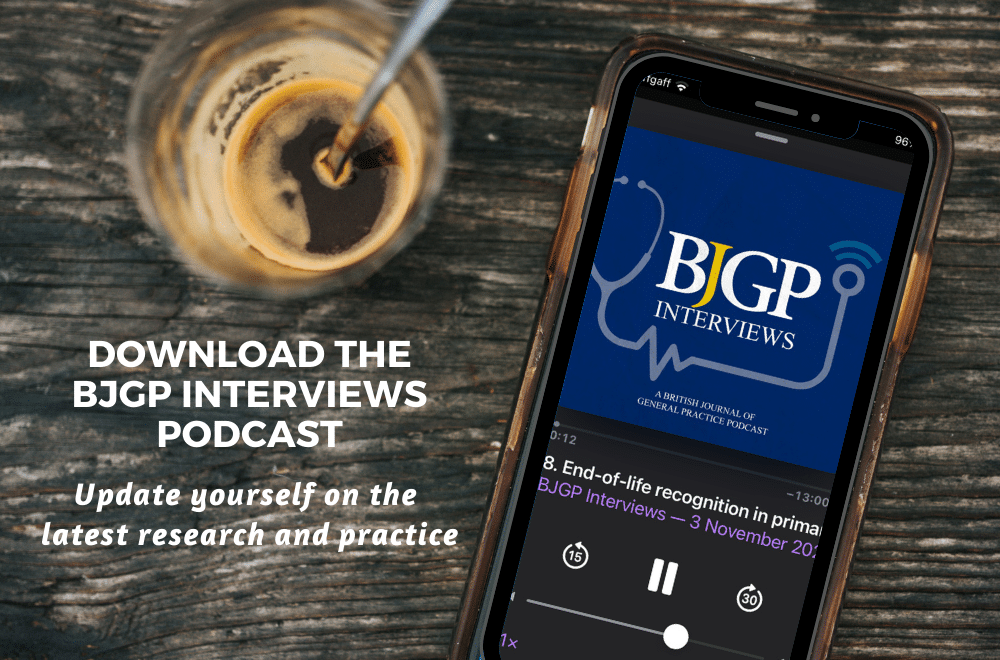This episode (our 100th podcast!), we have a round table discussion with our Editor-in-Chief, Euan Lawson, alongside the editorial team of Sam Merriel, Tom Round and Nada Khan. Get a sneak preview of the #BJGPTop10 before the countdown and listen to the BJGP editors discussing the top 10 most read research. Keep an eye out for the rankings via #BJGPTop10 #PrimaryCare.
Here are the top 10 (unranked) papers discussed in today’s podcast:
Continuity of care for dementia: higher continuity is associated with lower risk of delirium, incontinence, and emergency admissions https://doi.org/10.3399/BJGP.2021.0413
Speculum-free cervical screening: 17% more women in older age groupsundertook cervical screening when offered a speculum-free test https://doi.org/10.3399/BJGP.2021.0350
Burnout among GPs: estimates of GP burnout vary considerably across studies, from 6% to 32% https://doi.org/10.3399/BJGP.2021.0441
GP wellbeing during COVID-19: research synthesises international evidence and identifies key sources of GP stress https://doi.org/10.3399/BJGP.2021.0680
Proton pump inhibitor overuse: predictors of PPI overuse include unnecessary ulcer prophylaxis https://doi.org/10.3399/BJGP.2022.0178
Unreliability of the NICE Traffic Light tool: this tool was found to be unreliable for identifying seriously unwell children in primary care https://doi.org/10.3399/BJGP.2021.0633
Breast pain and breast cancer: this study of 11,000 women showed breast pain alone is not associated with breast cancer https://doi.org/10.3399/BJGP.2021.0475
Rises in anxiety prescribing: prescribing increases may reflect better detection, but some prescribing is not evidence based https://doi.org/10.3399/BJGP.2021.0561
Why GPs rarely do video consultations: phone is often preferred, as well as face-to-face when a visual component is needed https://doi.org/10.3399/BJGP.2021.0658
Unintended consequences of online consultations are that these can disadvantage some patients and create additional work for staff https://doi.org/10.3399/BJGP.2021.0426

